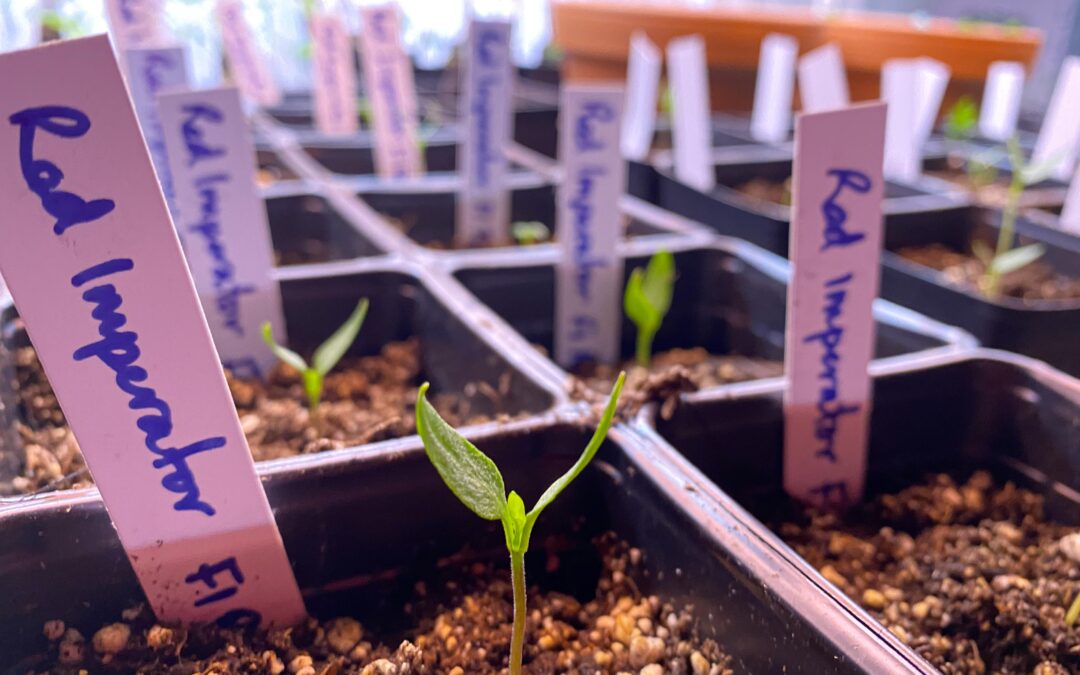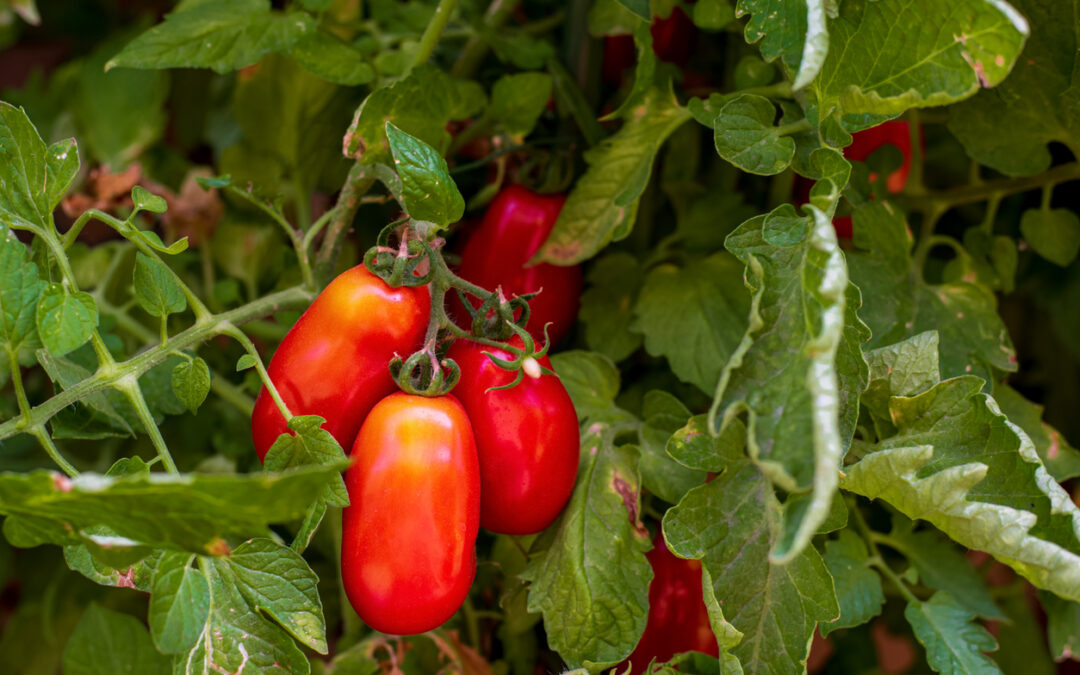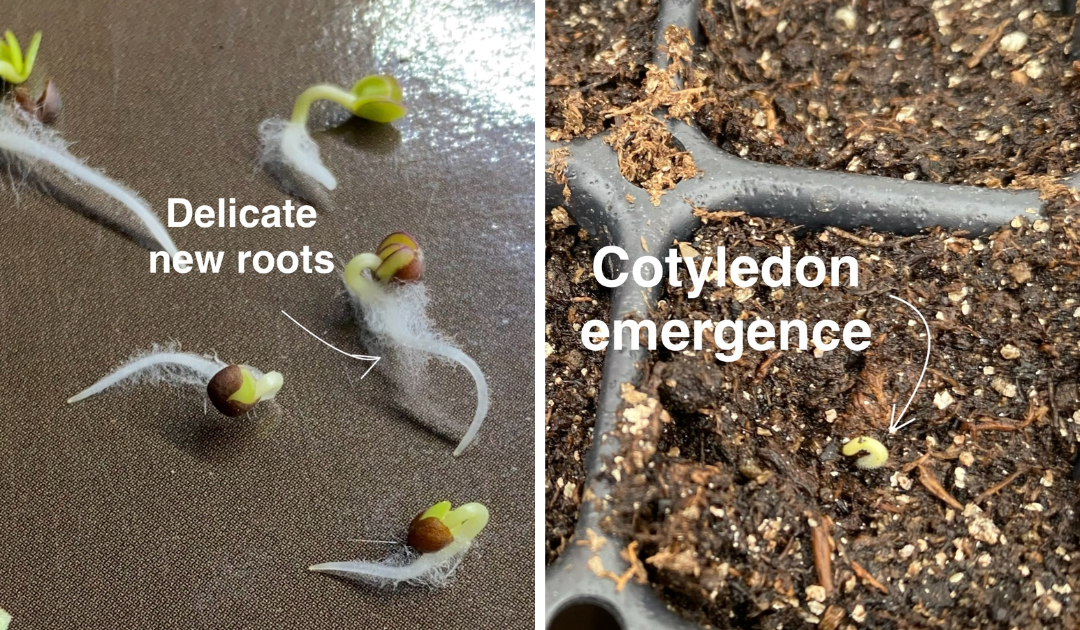One of the best things about having a greenhouse in your backyard is you can get a head start on your garden, soak up some of that beautiful sunshine, and shake off some of that cabin fever from a long winter. Over this late March weekend, I did just that, getting in some late winter, early spring seeding.
If you’re seeding in cold weather, here are some key tricks and hacks to improve your success.
1. Always read the seed packet
Each plant has specific limitations for how its seeds will germinate. Some seeds need to be soaked to germinate. Others, such as strawberries, need to spend three weeks in the fridge. Some need to be gently rubbed with sandpaper. All of these treatments, called “scarification”, are almost impossible to remember until you’ve been growing exactly the same thing year after year. So your best bet is to always read the seed packet. Seed companies want you to be successful, and they give you all the details you need right there on that handy little packet. When to plant, how deep, when/ if you need to thin, how to pretreat the seeds, etc.. And they will often refer to “last frost date”. These dates for your area can be found if you Google “last frost date” and where you live. In Alberta, the last frosts are between May 1 (where I live in Edmonton) and May 31 (in high altitude, exposed or northern communities like Peace River, Athabasca, Lethbridge or Okotoks). Plantmaps.com has a really good, interactive map that can guide you. Work back from those dates. If you’re lucky enough to have a greenhouse, you can add a couple weeks of frost-free growing on both ends of the growing season.
2. Care more about soil temperature than air temperature
Seeds need two things to germinate: moisture and warmth. Plants also need warmth to grow. But when we are seeding in cold weather, the air temperature that a growing plant needs is irrelevant to a seed. The seed cares about the soil that touches it. So put down your air thermometer and pick up your soil thermometer (even a meat thermometer will do). Our more delicate, warm loving plants like tomato and cucumber need to be planted when the soil temperature is 15℃ to 25℃. Colder than that and they won’t germinate. On the other hand, seeds like carrots and peas can be planted when the soil temperatures are more like 7℃. And how would you know the soil temp? With a soil thermometer. Soil is, of course, warmed by the air around it. This means that the soil in my greenhouse is usually 3-5 degrees warmer than the soil out in the yard. In fact, as I write this, there is more than 20 cm of snow in some parts of my yard and even the exposed ground is still frozen solid. But in the greenhouse, the top 8 cm of soil are fully thawed and workable. I give my seeds an even bigger advantage by planting them in pots filled with germination mix that has been dampened by cool water. I store those pots in the greenhouse and the brief daytime sun warms the pots and soil, and cools off nicely at night without freezing.
3. Plant in pots
Sure it’s nice and cool now but our prairie summers get hot, fast. Even though I have workable beds inside the greenhouse, I put my cool weather seeds in pots. They will germinate and grow in the unheated greenhouse, and I’ll be harvesting in April. But depending on the year, spring weather can turn into hot summer weather quickly. And cool weather plants struggle when it’s not cool. They’ll go limp, or bolt (got to seed and get so bitter as to not be enjoyable). So I need to be able to change their environment when the time is right. In other words, I can move them from the heat of the greenhouse to cooler areas outside and then even put them back into the greenhouse if it gets really cold out again. The other major benefit here is that birds are as excited about fresh leafy greens as I am, maybe even more. So my outdoor spinach and chard plantings often get gobbled up by birds in April. If I grow them in the greenhouse, they’re protected from birds and I can easily cover them with floating cloth if need be when they are moved outside.
4. Keep your pots off the ground.
Monitoring air temperatures is the name of the game for gardeners after our little seedlings have sprouted. They’re at their most tender so we want to keep them away from frost, even though many–like onions and kale and carrots– are frost tolerant. Warm air rises, so keep your seedlings off the ground during early spring. Keep them on a shelf to get just a little more warmth for them.
5. Make sure you have a very sturdy shelf.
Your spring crop is arguably the most precious. It brings us out of winter doldrums and banishes cabin fever, infusing us with new life and excitement! And what a horrible tragedy to do all that seeding and growing, only to have your shelf collapse. Whatever shelf you use, make sure it is sturdy enough to hold the weight of your pot plus the weight of watered soil plus the weight of future plant material. And you want something sturdy enough that it won’t fall over if you (or your loving cat) brushes against it with a knee or hip.



